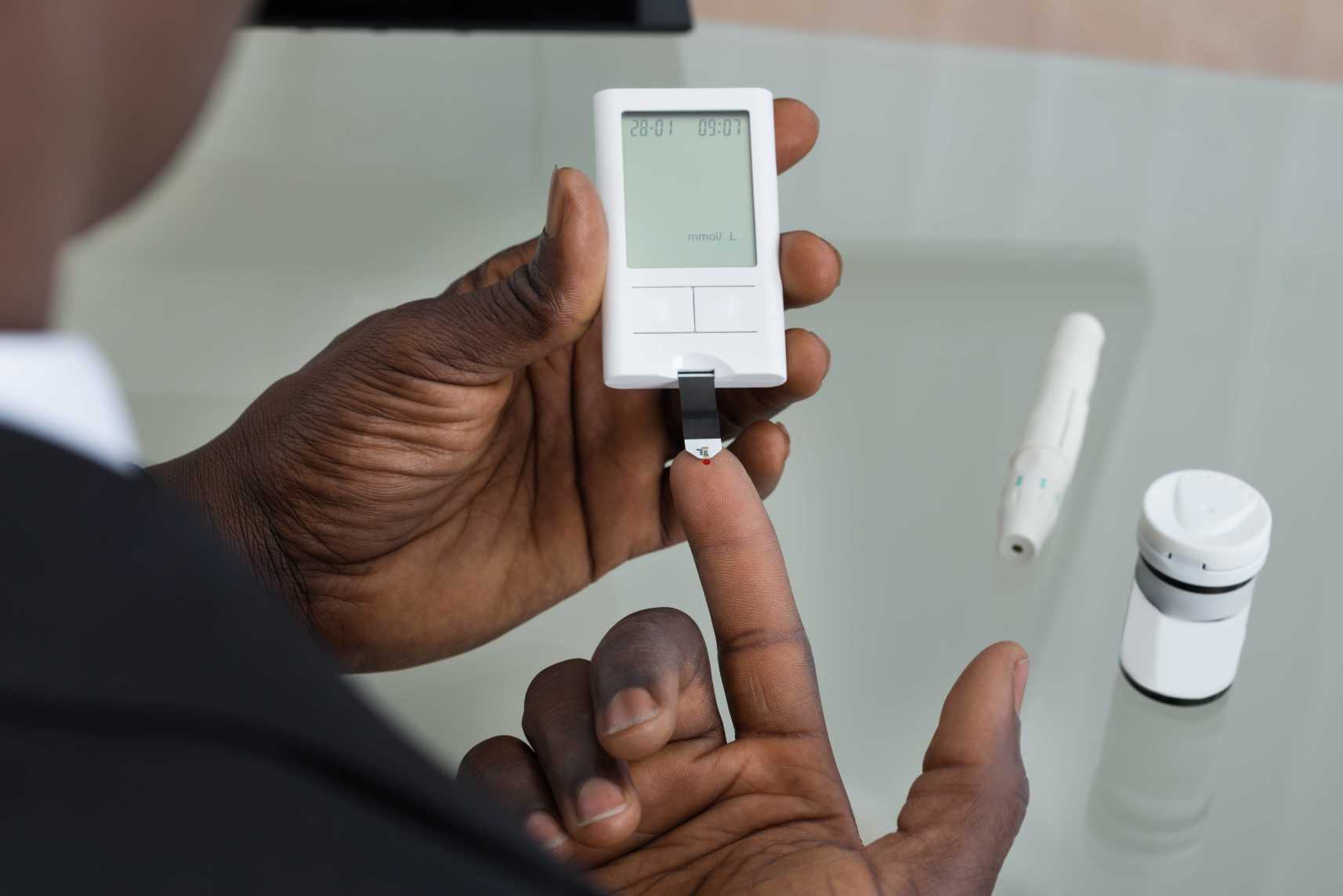
Diabetes insipidus vs. diabetes mellitus: what’s the difference?
Diabetes is one of the most prevalent conditions in the country, affecting about 34.2 million people in the United States. About 88 million adults in the country have a condition known as prediabetes, which can predispose an individual to diabetes and other health conditions [1].
Usually, when people refer to diabetes, they are typically referring to diabetes mellitus. There is, though, a rare condition called diabetes insipidus. While they share similar names, the two conditions are unrelated, presenting with entirely different symptoms. Learn more about the differences between diabetes mellitus and diabetes insipidus below.
What Is Diabetes Mellitus?
Diabetes mellitus is a condition noted by an increase in blood glucose levels brought on by changes to how cells respond to insulin. Insulin is a hormone produced and released by the pancreas. It works to transfer glucose from the blood to the cells, tissues, and organs. Glucose is the main and most accessible energy source for most cells in the body. Changes to insulin sensitivity or how the body responds to carbohydrates and how it releases insulin can result in excess glucose in the blood, along with the cells not getting enough fuel. This process can have negative health effects [2].
Types of Diabetes Mellitus
Diabetes comes in a few different forms, including:
Prediabetes
Prediabetes is the precursor to type 2 diabetes. People with prediabetes have higher than normal blood sugar levels but not as high as people with type 2 diabetes. Although milder than type 2, prediabetes should be addressed. If left untreated, it could quickly progress to type 2 diabetes. Fortunately, prediabetes can be reversed if the correct lifestyle changes and dietary changes are taken.
Type 1 Diabetes
Type 1 diabetes is a condition that is characterized by a malfunctioning immune system that mistakenly attacks cells in the pancreas responsible for producing insulin. Without enough insulin, blood glucose levels grow [2].
About 10 percent of diabetes cases are type 1. While it is more common in children and younger people, it can be diagnosed in anyone of any age [2].
Type 2 Diabetes
Type 2 diabetes is the more common form of diabetes, reportedly accounting for upwards of 95 percent of all diabetes cases [2]. Type 2 diabetes is characterized by insulin-resistant cells. Over time, insulin loses its effect entirely, no matter how much the pancreas produces. This ultimately results in excess blood sugar and high insulin in the body. There are several causes for Type 2 diabetes, including diet, lifestyle factors, environment, and/or genetics [3].
Gestational Diabetes
Gestational diabetes happens specifically during pregnancy. When you are pregnant, the placenta produces hormones that help to support the development of the fetus and ensure general health. However, these hormones can cause slight insulin resistance. Normally, the pancreas can overcome the insulin resistance by producing more insulin, but in some cases, the pancreas can get overworked and cannot keep up with insulin needs [3].
Gestational diabetes typically goes away following childbirth, but having it during pregnancy may increase your risk of developing type 2 diabetes in the future [2].
Signs and Symptoms of Diabetes Mellitus
Symptoms of diabetes can vary based on the severity of the blood sugar elevation. Some people with prediabetes and type 2 diabetes may not experience any symptoms or exhibit minor symptoms. Symptoms tend to come on quicker with type 1 diabetes, but this is not assured for all people [3].
The most common signs of diabetes of all types include:
- Increased hunger and thirst
- Excessive urination
- Ketones in the urine
- Unexplained, unintended weight loss
- Blurry vision
- Sores and injuries that heal slowly
- Frequent infections
- General fatigue
- Irritability [3]
Left untreated, extended periods of high glucose levels can cause serious complications such as damage to nerves, which can lead to numbness and tingling in the extremities. Complications can also include increased cardiovascular problems, kidney failure, and eye damage [2].
What Is Diabetes Insipidus?
Despite the name, diabetes insipidus has no relation to diabetes mellitus. It does not involve high blood sugar or insulin complications. Instead, diabetes insipidus affects fluid imbalances that result in frequent urination [4].
These imbalances are caused mainly by problems with antidiuretic hormone (ADH), also known as vasopressin. Made in the hypothalamus and stored in the pituitary gland, ADH regulates the amount of water the kidneys release via urine. A lack of ADH or resistance to ADH’s effects can result in excess water entering the urine, leading to a fluid imbalance [4].
The body produces more ADH when there is low blood pressure or dehydration. More ADH tells the kidneys to hang onto the water that it has. Diabetes insipidus would cause the body to simply release that water, regardless of whether you are dehydrated [5].
Types of Diabetes Insipidus
Central Diabetes Insipidus
This is the most common form, characterized by insufficient ADH released from the brain. This is usually caused by damage to the pituitary gland or hypothalamus. That damage can come from an inherited defective gene, surgery, or physical injury [5].
Nephrogenic Diabetes Insipidus
With this form of diabetes insipidus, there is plenty of ADH, but the kidneys do not respond to it properly, preventing them from retaining water. This can be caused by gene defects, kidney disease, high calcium levels, or certain medications (typically lithium) [5].
Dipsogenic Diabetes Insipidus
Unrelated to ADH levels, this form of diabetes insipidus is caused by simply drinking too many fluids. This essentially comes from damage to the mechanisms that regulate thirst, causing you to feel thirsty even when there is enough fluid [5].
Gestational Diabetes Insipidus
Gestational diabetes insipidus occurs in some pregnancies. The placenta creates hormones that may interfere with the kidney’s ability to process and react to ADH. This condition tends to go away shortly following childbirth [5].
Signs and Symptoms of Diabetes Insipidus
The most characteristic symptom of diabetes insipidus is increased urination. The average person will pee about one to two liters of urine per day, but diabetes insipidus may cause a person to pee three or more liters of fluid per day [5]. In more serious cases of diabetes insipidus, people have been known to pee upwards of 19 liters of urine a day [4].
Other signs and symptoms of diabetes insipidus may include:
- Constant, extreme thirst
- Urine appearing more pale/clear
- Frequently needing to get up to pee at night
Someone with diabetes insipidus will usually want to constantly drink water. However, without access to water, you can’t make up for the water loss, leading to dehydration. There may also be electrolyte imbalances. Electrolytes help to balance fluids, but an imbalance can result in various symptoms, like nausea, vomiting, and confusion [4].
Diabetes mellitus may also cause frequent urination and increased thirst, but not to the degree of diabetes insipidus. Diabetes mellitus will also typically manifest in the forms of other noticeable symptoms. While diabetes insipidus is not curable, it can be managed with medication.
Despite the similar names, diabetes mellitus and diabetes insipidus are completely different conditions. If you think you may have diabetes, consider getting your blood sugar levels tested with an HbA1c test with Everlywell.
References
1. National Diabetes Statistics Report. Centers for Disease Control and Prevention. URL. Accessed January 28, 2022.
2. Diabetes: An Overview. Cleveland Clinic. URL. Accessed January 28, 2022.
3. Diabetes. Mayo Clinic. URL. Accessed January 28, 2022.
4. Diabetes insipidus. Mayo Clinic. URL. Accessed January 28, 2022.
5. Diabetes Insipidus. Cleveland Clinic. URL. Accessed January 28, 2022.
